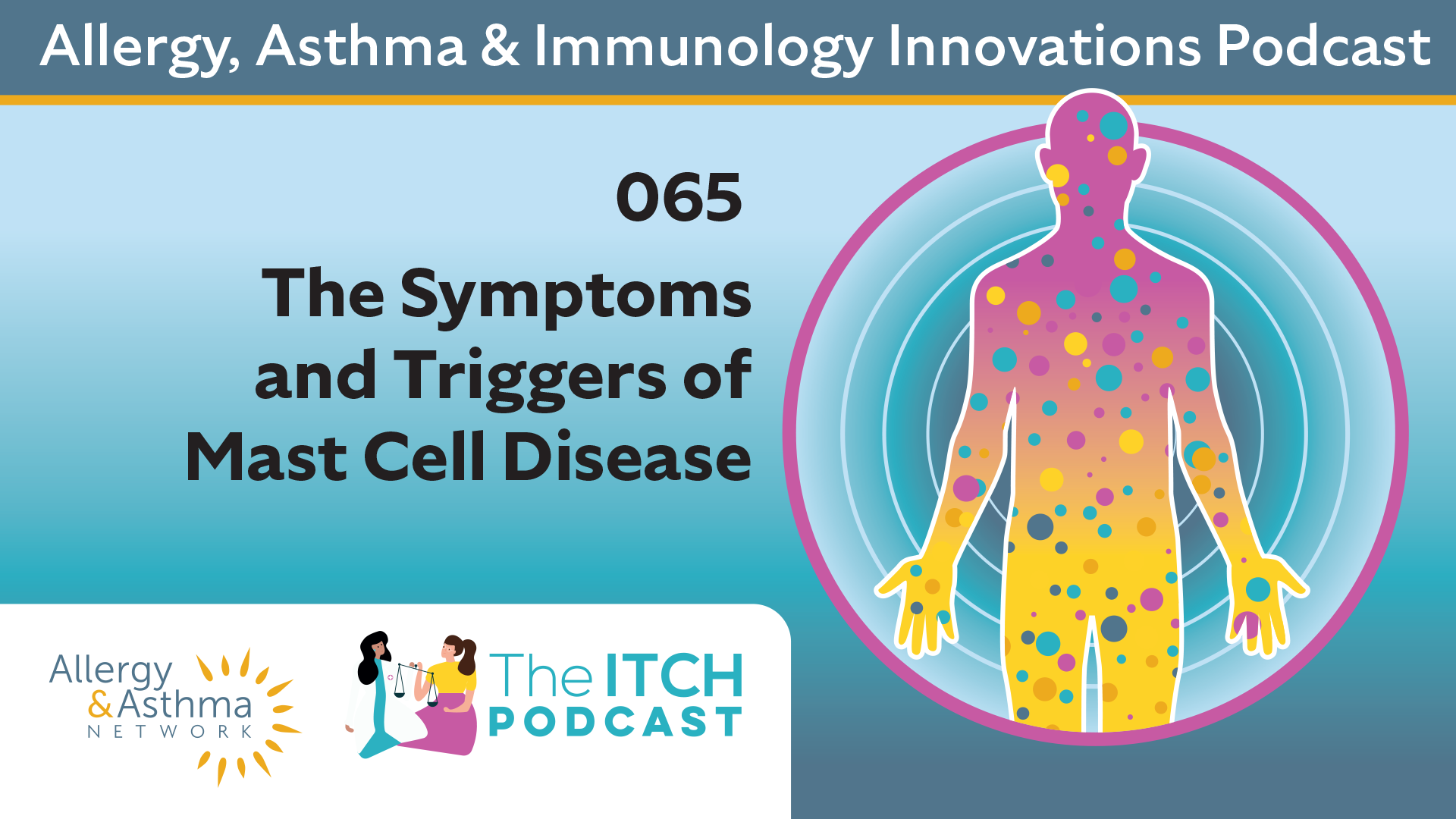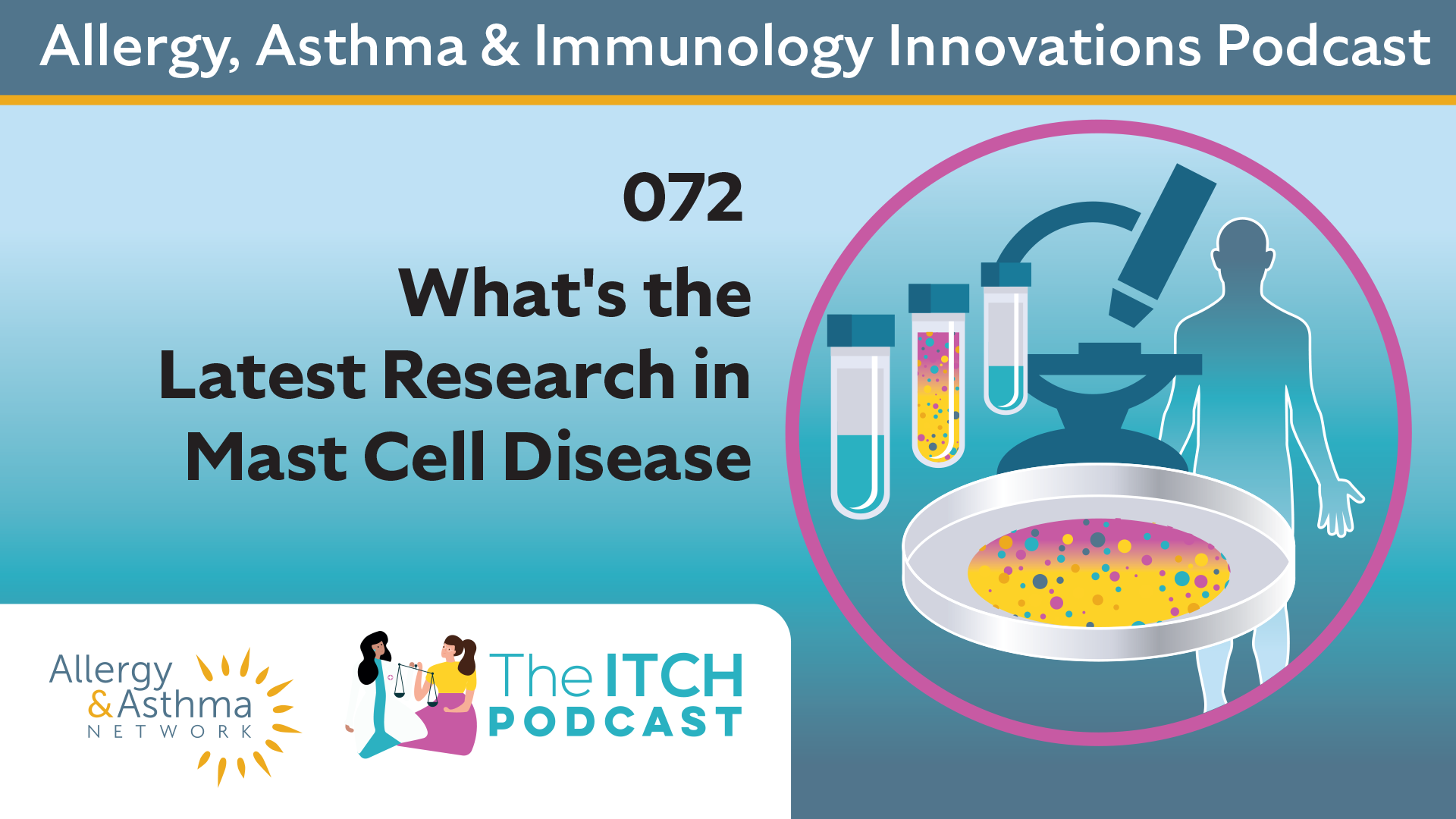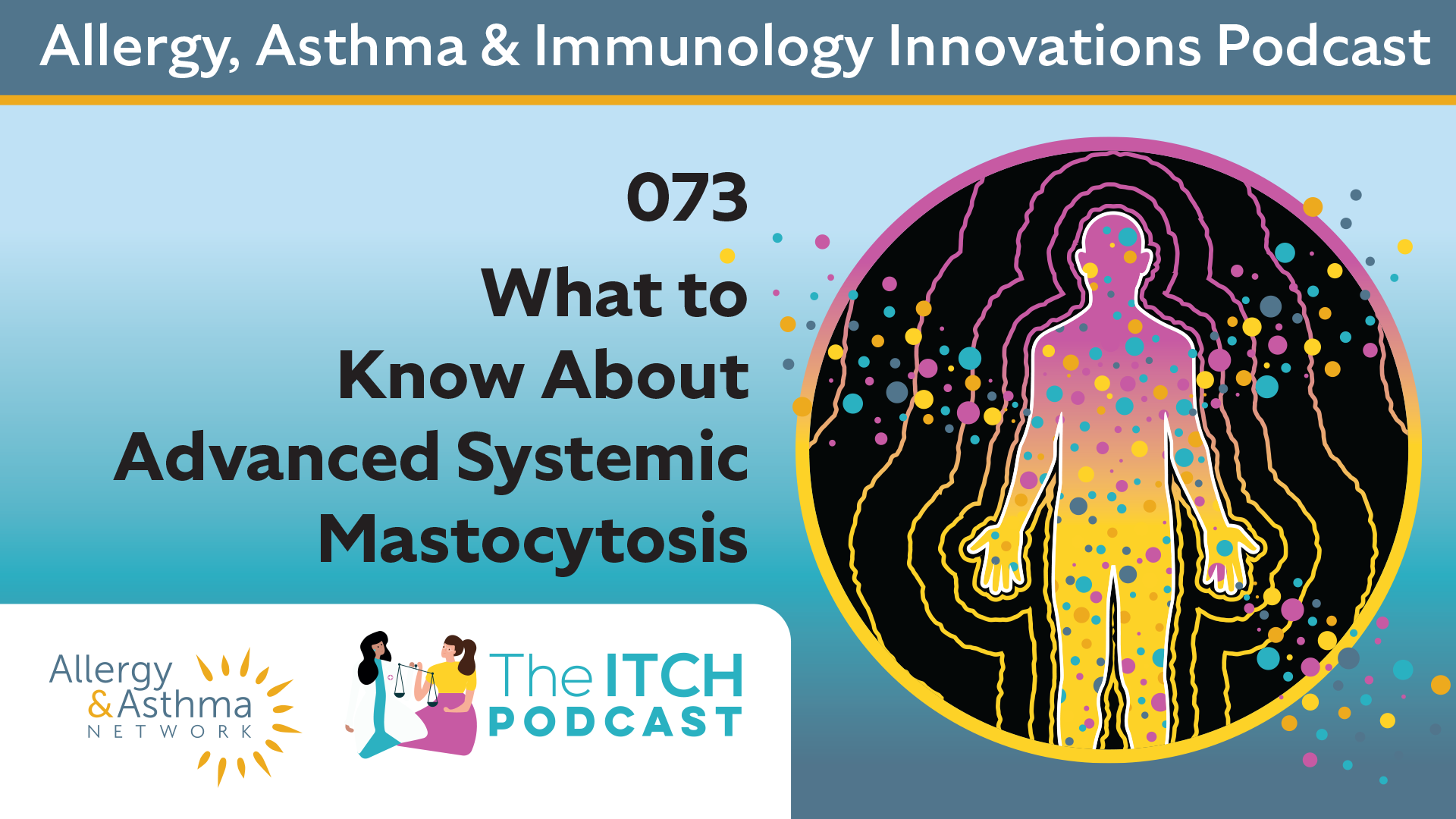Ep. 67: How to Diagnose Mast Cell Disease
Part of the series: Allergy, Asthma & Immunology Innovations Podcast
This podcast was made in partnership with Allergy & Asthma Network. We thank Blueprint Medicines for sponsoring this podcast.
LISTEN TO EPISODE 67:
iTunes • Spotify• Google • Amazon Music • YouTube
The steps to diagnose mast cell disease are akin to a detective novel! Scratching for hives, collecting various samples and biopsies and finally putting two and two together. Put on your detective hat because we will be diving into how to diagnose mast cell disease!
Dr. G and Kortney are joined by Dr. Josh Milner, one of the top experts in the field of mast cell disease, as they dive into the complexities of diagnosing mast cell disorders, focusing on cases of unexplained anaphylaxis and using this as our guide to understanding all of the tests that doctors do to figure out what is happening with your mast cells.
From histories to blood and urine tests to Darier's sign, bone marrow biopsies and more, we dig into the many tests needed for the detective work diagnosing mast cell disease. We learn that a nuanced approach is required to diagnose mast cell disorders and the importance of thorough evaluation to differentiate between potential causes.
What we cover in our episode about diagnosing mast cell disease:
Unexplained anaphylaxis could be linked to mast cell disorders.
Diagnostic tools:
Blood tryptase test (fast but time-sensitive)
Urine metabolite tests (easier, longer window)
Skin rash assessment (urticaria pigmentosa)
Bone marrow biopsy (serious cases)
Symptoms: Sudden episodes, chronic issues like fatigue, depression.
About our guest - Dr. Josh Milner
Joshua Milner, MD, is a renowned leader in discovering and understanding genetic diseases leading to allergic symptoms, including Hereditary Alpha Tryptasemia Syndrome, PLAID, PGM3 deficiency, ERBIN mutation, and others. With a background in biology from MIT and an MD with distinction in immunology from Albert Einstein College of Medicine, Dr. Milner has extensive experience in pediatrics and allergy and immunology, serving as chief of the Laboratory of Allergic Diseases at NIAID.
His vision is to leverage genetic variation to improve diagnosis and care for patients with allergic diseases through comprehensive genetic sequencing and functional studies, aiming for personalized medicine and interdisciplinary collaboration in pediatric allergy, immunology, and rheumatology.
More about Dr. Milner: https://www.pediatrics.columbia.edu/profile/joshua-milner-md
More in the Mast Cell Disease Series:
More resources about mast cell disease:
Mast Cell Disease Overview: https://allergyasthmanetwork.org/health-a-z/mast-cell-diseases/
What is Anaphylaxis? https://allergyasthmanetwork.org/anaphylaxis/
What is Epinephrine? https://allergyasthmanetwork.org/anaphylaxis/what-is-epinephrine/
The Mast Cell Disease Society: https://tmsforacure.org/
What is used to diagnose mast cell disease?
Properly diagnosing anaphylaxis: Distinguishing anaphylaxis from other reactions: It's crucial to accurately identify if the episode was indeed anaphylaxis, as misdiagnosis is frequent. Characteristic signs include sudden and objective symptoms like difficulty breathing, swelling, and rapid heart rate.
Blood tests for diagnosing mast cell disease: A tryptase test measuring blood tryptase within 4 hours of an episode is valuable. However, elevated levels could also indicate hereditary alpha-tryptosemia, requiring further investigation.
Urine metabolite tests for diagnosing mast cell disease: Collecting urine within hours post-episode offers a longer detection window for mast cell mediators. This test is gaining traction and might be more accessible than blood tests.
Skin biopsy for diagnosing mastocytosis: Not used as frequently. The first sign would be to look for Urticaria pigmentosa using the Darier sign, involving scratching the rash and observing hive formation helps diagnose urticaria pigmentosa. A biopsy is only needed if the rash appears atypical.
Bone marrow biopsy: Reserved for suspected systemic mastocytosis. This is only considered for severe or unexplained anaphylaxis, elevated baseline tryptase (excluding hereditary alpha-tryptosemia), or organomegaly (enlarged liver or spleen).
Other biopsies: Counting mast cells in gut biopsies is not helpful unless they appear abnormal.
Time Stamps
Ep. 67 How to diagnose mast cell disease
00:00:40 - What are the first steps of diagnosing mast cell disease?
00:01:10 - Starting with unexplained anaphylaxis to diagnosed mast cell disease
00:02:46 - Patient history used in diagnosing mast cell disease
00:04:15 - Blood and urine tests used to diagnose mast cell disease
00:07:07 - The importance of a 24-hour urine sample
00:07:50 - Why histamine tests are not used
00:08:10 - Can you do an in-office challenge?
00:09:33 - Skin biopsy, urticaria pigmentosa and Darier’s sign
00:12:54 - When a bone marrow test is done
00:14:24 - Genetic testing for the KIT mutation: D816V test
00:15:55 - Why blood count matters
00:16:17 - What leads to the diagnosis of idiopathic mast cell activation syndrome?
00:18:30 - Alpha-gal (meat allergy) diagnosed as mast cell activation syndrome
00:19:40 - Summary of tests needed to diagnose mast cell disease








